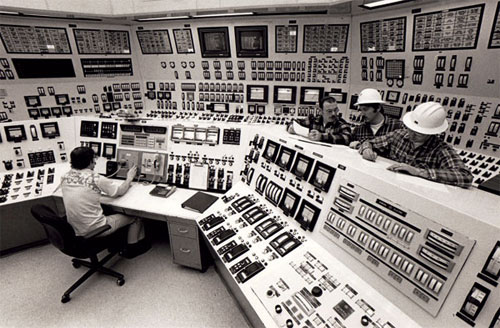Eric The Viking
Established Member
- Joined
- 19 Jan 2010
- Messages
- 6,599
- Reaction score
- 76
devonwoody":1imjxl52 said:Many thank to all contributors above.
Our present system is 26 years old, it works for us, we have to turn the heating down many evenings in the winter because we get too warm.
Good points: The rads will be heavy steel sheet & thus probably good for another 30 years. They're not hugely efficient, in that they don't transfer a lot of heat (they don't wast energy either!), but they are solid. The pipe will be thicker too.
Bad points: Might be imperial sized pipe (the fittings are still imperial threads even today, around much of the world!). I _would_ worry about de-zincification, especially anywhere subject to cold and damp in the summer (spare room, etc.). Take great care undoing fittings, as apparently solid rad valves (especially, as they're next to steel) can just squish when a Stillson wrench is applied.
Checking for corrosion:
If you've had corrosion proofer in the system (Fernox, back then), it's probably fine. When the system is on, feel the bottom centre of big rads. If it's stone cold after a few minutes running (the top should be very hot), the bottom tube is full of sludge, blocking the flow.
Whilst this is corrosion, it's probably not terminal. With care you can restore any lost efficiency by removing the radiators and flushing them over a drain in the garden. I use a jet-wash with a drain cleaning attachment. On single rads, the 'bullet' will pass through the top and bottom tubes, scouring rust and crud away as it goes. It can be harder with double ones, depending on the design, but still do-able. The physical shape of modern rads makes this almost impossible.
A good corrosion test in two parts:
(1) Draw off a jam-jar full of circulating water from the drain **** (usually near the boiler, but close to the lowest point on the system).
Check for black (bad) or brown sludge (worse). There will always be some, but it should settle out fairly quickly. If it's like soup the system needs flushing completely before doing anything major to it, and that process may (will) reveal leaks.
(2) Put a big, degreased wire nail in said jam-jar of soup, leave it standing on a sunny windowsill for a week or two with the top open (corrosion needs oxygen to go 'well') and observe: if the nail rusts your corrosion proofer is absent or too diluted, and the system almost certainly corroded internally. If it doesn't, it's probably fine (but see brass fittings)
However, the three way motor valve broke down last spring and I haven't repaired it yet, radiators are looking tatty, wondering whether to soldier on or look at the costs before Ossy gets his pen out.
They do it all the time. The mechanics of 2-way and 3-way valves are truly dreadful - a stepper motor+gearbox stalled against a spring with limit microswitches to tell the controller where it's 'pointing'. Replacements are pretty cheap, around £12-15, and for big-name valves (Honeywell, Danfoss, etc.) you can get the motor head separately. You might be able to swap the motor head without replacing the valve body. If it's not leaking, that's a cheap fix.
so a condensing boiler is what? our present boiler has the flue outlet on an outside wall, also the air inlet in the same grill. It is also fitted into our kitchen units at floor level and I don't want a new kitchen as well. Will a condensing boiler just pop into the existing boiler cupboard do you think?
It will physically fit - new boilers are more compact - but the flue may not line up, and you may need to make a smaller hole above the 'balanced flue' you presently have. Modern flues are not only small, but the exhaust from a condensing boiler is CO2 and water at low temperatures, so they don't really need any safety grille round them. You can easily make the necessary hole with a diamond core drill, and brick up the old square one.
"Condensing" means having two or three heat-exchangers in series, so that the last tiny bit of heat from the gas is used to heat the water. The condensing part is removing the latent heat of the steam produced, by condensing it to water ("cloud") inside the boiler before it leaves the flue. It's why you see a plume coming from the things in cold weather - it's the condensed steam as a cloud. A by-product of the process is an acidic soup caused by (I think) the formation of carbonic acid and residual amounts of sulphur compounds (from the fuel gas), which is what has to be separately drained away from the 'condensate trap.'
A final thought: the new boiler technologies are characterised by two things: lots of narrow pipework, & complex control systems. If fitting a new boiler to an old system, your plumber should thoroughly flush the system before and after installation. The first gets rid of old sludge, and the second gets rid of copper filings, soldering fluxes, etc.
Old boilers didn't care much about sludge - it made the pumps fail occasionally, but otherwise didn't do a lot of harm. On new boilers, sludge can cause expensive early failures. We fitted one of these, and it's brilliant (not cheap, but less than two hours of my plumber's time). They only really work _after_ the system has been cleaned, but work they most certainly do!
HTH,
E.


































